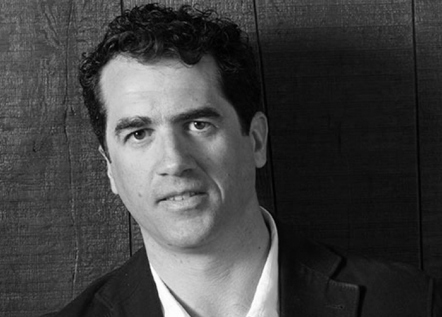Contributors
Filter contributors by:
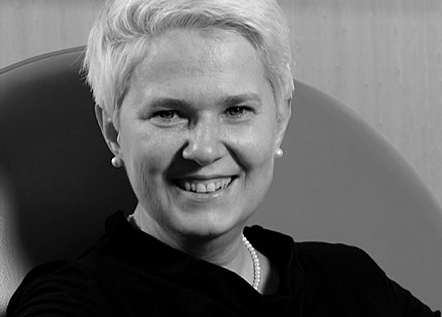
Antonella Andriani
ADI Vice President
Due Lauree magistrali, in Disegno industriale al Politecnico di Milano e in Design del prodotto ecocompatibile al Politecnico di Torino, e Diploma postlaurea ASP – Alta Scuola Politecnica (Polimi e Polito).
Strategic Designer, è attiva nella definizione di programmi strategici design-oriented, spaziando dal design di prodotto alla comunicazione visiva, dall’arredo al design per l’infanzia, dall’immagine coordinata all’editoria; opera in contesti internazionali per sviluppare e valorizzare il design italiano. Dal 1989 al 2002 è stata project manager di progetti per lo sviluppo di prodotti e servizi finanziari come dipendente dell’area Information & Communication Technology di: Rasfin – ora Allianz Group (banca assicurazione); Fiditalia – SoGen e UniCredit (credito al consumo); Accenture (Business Process Management – BPM); JPMorgan (investment banking); Database Progetti (soluzioni per banche commerciali, per es. Credito Valtellinese).
Dal 2005 insegna nella Scuola di Design del Politecnico di Milano; dal 2009 nelle Scuole di Design dell’Accademia di Belle Arti di Verona, dove ha istituito il Biennio magistrale in Italian Strategic Design che dirige.
È stata Vice Direttore dell’Accademia di Belle arti di Verona (2018-2020), Direttore del Dipartimento di Progettazione e Arti Applicate (2015-2018), International Cooperation Director per lo sviluppo dei rapporti internazionali con la Cina (2013-2015).
Vice Presidente ADI e membro del Consiglio di Amministrazione Fondazione ADI Collezione Compasso d’Oro (dal 2020); è stata Vice Presidente ADI Lombardia per tre mandati; è membro dell’Osservatorio permanente del Design (dal 2015).
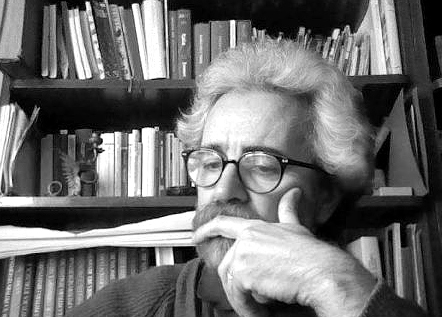
Renzo Bassani
Architect & curator
Architect, member of the National Board of IN / Arch, he graduated in 1980 at the Politecnico di Milano where he collaborated in research programs funded by the Ministry for University and scientific and technological research and taught from 1994 to 2013 as adjunct professor in Architectural and Urban Design. He has participated in initiatives in Italy and abroad as a teacher and speaker at international seminars. He has edited volumes and published essays and theoretical contributions in specialized journals. With his studio and in collaboration he carried out design activities in the field of architectural and urban design.
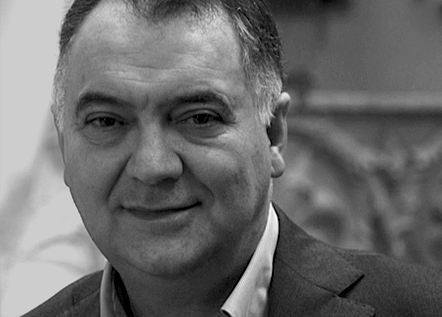
Paolo Belardi
Civil engineer
Paolo Belardi (Gubbio 1958), graduated with honors in Civil Construction Engineering in 1982 at the University of Rome “La Sapienza”, is a student of Vittorio De Feo and is full professor of “Architectural and urban composition” in the Department of Civil Engineering and Environmental University of Perugia, where he is president of the degree course in Design, head of the degree course in “Planet Life Design” and delegate of the Rector to Heritage, Graphic Image, Energy Policies and Environmental Protection. He also taught in the Faculties of Architecture of the University of Rome “La Sapienza” and of the Second University of Naples. From 2013 to 2018 he was director of the “Pietro Vannucci” Academy of Fine Arts in Perugia.
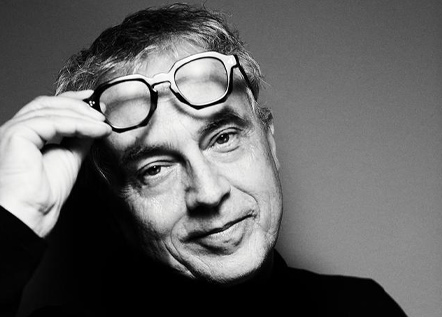
Stefano Boeri
Architect & Designer
Architect, urban planner, architectural theorist, he is Full Professor of Urban Planning at the Politecnico di Milano and teaches as a guest professor in several international universities (Harvard Graduate School of Design in Cambridge, Strelka Institute in Moscow, Berlage Institute in Rotterdam, École Polytechnique Fédérale di Lausanne). Since 2016 he has been director of the “Future City Lab” of Tongji University in Shanghai, a post-doctoral research programme which explores the future perspectives of global metropolises from the biodiversity and urban forestation perspective, and Since 2018 he has been President of the La Triennale di Milano Foundation.
In 1999 he founded Boeri Studio in 1999, together with Gianandrea Barreca and Giovanni La Varra while 2011 saw the establishment of Stefano Boeri Architetti. In 2014, with Yibo Xu, he founded Stefano Boeri Architetti China, based in Shanghai. The work of the Stefano Boeri Architetti studio ranges from the production of urban visions and architecture to interior and product design, with constant focus on the geopolitical and environmental implications of urban phenomena.
Attention to the relationship between city and nature led to the creation of the Milan Vertical Forest, the first prototype of a residential building featuring over 700 trees and 20,000 plants that has received numerous international awards. Stefano Boeri is co-chair of the scientific committee of the World Forum on Urban Forests. Stefano Boeri Architetti is currently working on international urban forestation projects such as Vertical Forests in Lausanne, Utrecht, Eindhoven and Nanjing and several Forest Cities projects around the world. Since 2020, Stefano Boeri is President of the Scientific Committee of Forestami, the project aimed at planting 3 million trees in the metropolitan area of Milan within 2030. In Orani (NU) Boeri Studio is developing the project Pergola Village conceived by Costantino Nivola.
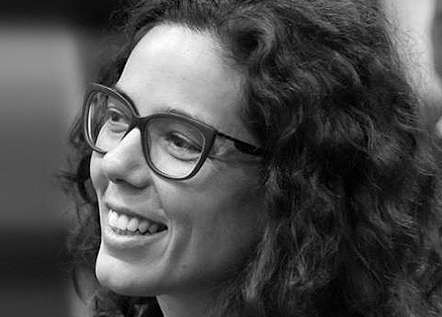
Barbara Cadeddu
Scientific coordinator
Engineer and PhD in architecture, he combines teaching and research activities on the themes of urban regeneration with professional practice. She is currently a consultant for public administrations and third-sector associations for strategic planning, programming of the ESI Funds and projects management for culture and social innovation. She has been Consultant to the Councilor for Tourism, Crafts and Commerce of the Sardinia Region (2017-2019) and Council Member for Strategic Planning, Community Planning, Institutional Communication, Institutes of Participation and Equal Opportunities for the City of Cagliari (2013-2016).
She is also co-creator and scientific coordinator of AJU/AJA, a project of culture of design and craftsmanship with the scientific responsibility of Triennale Milano and Cologni Foundation for the Métiers d’Art. She has been scientific director /coordinator of Frestival dell’Architettura di Cagliari (2020) and CagliariPaesaggio, directed by Joao Nunes and Micael Jacob (2018); FESTARCH organized by RCS MediaGroup (Cagliari 2007, 2008; Perugia, Assisi, 2011, 2012). For Stefano Boeri Architetti she was Project leader in the context of the Great G8-2009 Event in La Maddalena (2008-2010) and today she is Consultant for the urban planning and participatory aspects of the “Pergola Village” project in Orani (NU).
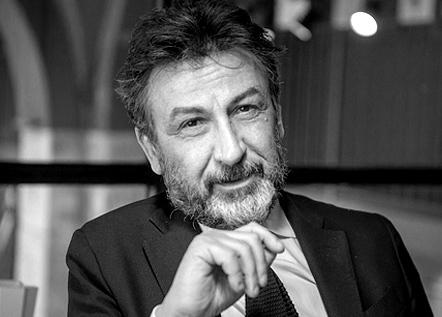
Maurizio De Caro
Architect
Architect, Journalist, collector of contemporary art, architectural theorist, former professor of Aesthetics at the Faculty of Architecture of Politecnico di Milano, Maurizio De Caro wrote essays for Electa, Fabbri Editore, Di Baio, Carte Segrete, Maggioli. Collaborate with Corriere della Sera, Il Sole24ore, La Stampa, il Riformista and others etc., currently columnist for affari Italiani.it and ONE (Listone Giordano). Among its projects: the light rail Cascina Gobba-H. San Raffaele, the headquarters of Don Mazzi’s Exodus Community, the Ravizza Park redevelopment with the new lighting systems called “Palo Ambrosiano” and many residential interventions, including two districts in Milan and Rho, and an important complex in Nova Milanese. He coordinated the design group for the realization of the Service Architectures of Expo Milano 2015. Since 2018 he is art director of Krill Design Councilor of the Order of Architects of the Province of Milan were ha lives and works.
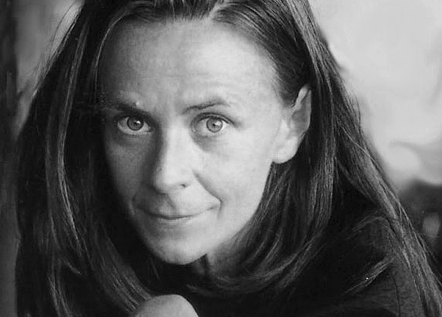
Alessandra Battisti
Scientific coordinator & technology researcher
Docente del Lab. di Sintesi in Progettazione Ambientale e del Lab. Progettazione Tecnologica e Ambientale nel CdL UE. Coordinatore scient. Erasmus di Architettura, Direttore del Master Univ. 2° liv. in Valorizzazione e gestione dei centri storici minori. Membro del Collegio dei Docenti del Dottorato di PDTA. Docente del Master Univ. 2° liv. in Architettura Bioecologica e Tecnologie Sostenibili per l’Ambiente. 94-96 ricercatore al Politecnico di Monaco. Visiting Professor in Univ. italiane ed estere. Esperto valutatore della UE-DG XXII-Energy in Building. Componente dell’ Albo degli Esperti e dei Revisori del MIUR. E’ componente del tavolo del MibaC sull’Efficienza energetica del patrimonio storico, e del tavolo Ambiente/Aeroporto del Min. delle Infrastrutture. Responsabile scientifico di importanti ricerche naz. ed internaz. dal 94 svolge attività di ricerca e sperimentazione sui temi dell’innovazione tecnologica e della efficienza ecologica ed energetica in edilizia, dell’approccio bioclimatico nella progettazione e sostenibilità ambientale architettonica, urbana e insediativa. Ha vinto numerosi concorsi internaz. tra cui: Europan 5 (98), Waterfront di Formia (00), Europan 6 (01), Waterfront e Porto Storico di Civitavecchia (02), Parco Cerite a Cerveteri (03), Eurosolar Italia(04), Case bioclimatiche a Roma (05), Eurosolar Internaz. (06), Marina di Latina (07), Alloggi a La Maddalena (09), Nouvelle Comédie Ginevra (10), Riqualificazione dell’ ITC Radice a Roma (11), Architetture di Servizio per l’Expò di Milano 2015 (12). Coordina una collana editoriale della Alinea Editrice ed ha al suo attivo 130 pubblicazioni tra articoli, saggi e monografie tra cui: Qualità ed ecoefficienza delle trasformazioni urbane (02), La Qualità ambientale delle Architetture di interno(05), Ambiente e cultura dell’abitare (2000,12), Green Airport (12), Technologies for Small Buildings (12), Rinnovare le periferie (14)
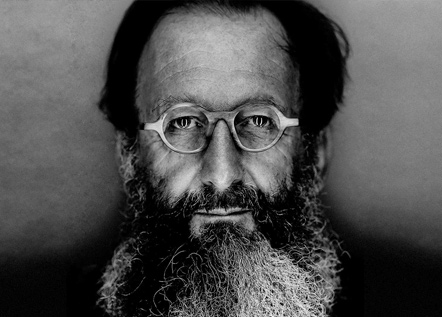
Michele De Lucchi
Architect & Designer
Designer, architect and author, Michele De Lucchi graduated in architecture in Florence. During the period of radical and experimental architecture he was a prominent figure in movements like Cavart, Alchymia and Memphis. De Lucchi has designed lamps and furniture for the most known Italian and European companies. For Olivetti he has been Director of Design from 1992 to 2002 and he developed experimental projects for Compaq Computers, Philips, Siemens and Vitra. He designed and restored buildings in Japan, Germany, Switzerland, and in Italy. He has received numerous awards, including the Compasso d’oro in 1989, 1991, 1994. In 2000 he was appointed Officer of Italian Republic by President Ciampi; in 2001 he has been nominated Professor at the Design and Art Faculty at the University in Venice; in 2006 he received the Honorary Doctorate from Kingston University, for his contribution to “living quality”; in 2008 he has been nominated Professor at the Design Faculty of the Politecnico of Milan and Member of the Accademia Nazionale di San Luca in Rome. In 2009 he received the Golden Fleece Order and in 2010 the Presidential Order of Excellency by President of Georgia, Mikheil Saakashvili.
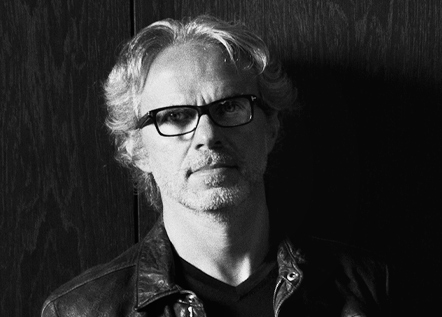
Alfonso Femia
Architect
È ideatore e co-fondatore nel 1995 di 5+1, lo studio che diventa 5+1AA nel 2005 e cambia poi la propria denominazione in Atelier(s) Alfonso Femia nel 2017. È stato docente alla Kent State University di Firenze, alle facoltà di Architettura di Ferrara e di Genova e visiting professor all’università di Hong Kong (Cina).
Nel 2019, è stato direttore artistico della terza edizione della Biennale di Pisa. Tra i suoi progetti più recenti: Les Docks a Marsiglia, la nuova sede BNL-BNP Paribas a Roma, la Dallara Academy a Parma e The Corner Milano. Attualmente sono in corso i progetti urbani di La Ciotat, Montpellier, Lione, Tolosa, Avignone, Marsiglia, Tashkent, Milano, Algeri, La Spezia e Roma.
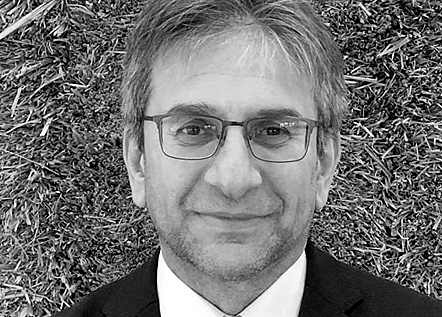
Antonio Brunori
Forester & journalist
Forest professional expert, forestry and agricultural journalist, is graduated in Forestry Science at Firenze University (Italy), in “Agroforestry” at UFL, Dept of Forest Resources and Conservation of Gainesville – Florida (USA), with a Ph.D. at University of Perugia (Italy) – Dept of Agricultural, Food and Environmental Sciences on ecosystem services in Olea europaea plantations.
From 2001 he is Secretary General of PEFC Italy (Programme for Endorsement of Forest Certification schemes) and member of the International PEFC Task Force for the development of the certification standard for sustainable agriculture.
He has participated in international projects on issues of legality, sustainable forest management and the enhancement of forest products and in Italy in projects on the issues of enhancement of nearby forestry chains and ecosystem services.
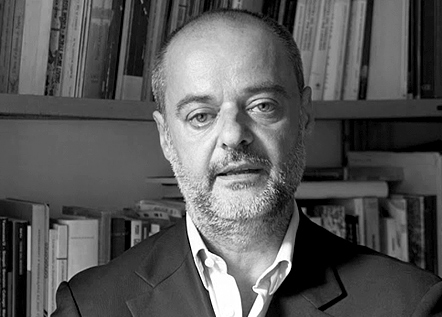
Francesco Orofino
IN/ARCH secretary general
Francesco Orofino, segretario generale IN/ARCH, socio fondatore dello studio di progettazione GAP ARCHITETTI ASSOCIATI con il quale svolge la propria attività professionale, in Italia ed all’estero, dal 1992. È stato Consigliere dell’Ordine degli Architetti PPC di Roma e Provincia, esperto del Comitato Economico e Sociale dell’Unione Europea, professore a contratto presso la Facoltà di Architettura – Politecnico di Bari. Ha lavorato con diverse ONG in progetti di cooperazione con i paesi in via di sviluppo.
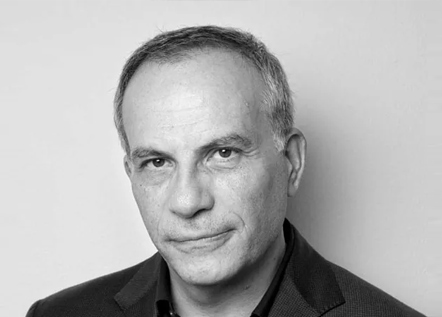
Stefano Casciani
Designer & curator
Nasce a Roma il 9 aprile 1955 e dopo gli studi di letteratura, architettura e design si trasferisce a Milano nel 1979, chiamato da Alessandro Mendini come redattore freelance della rivista . A 25 anni è art director e responsabile dell’immagine per Zanotta, partecipa alle attività sperimentali dello Studio Alchimia e inizia l’attività di consulente per la comunicazione, art director e designer per numerose aziende, tra cui Bticino (dove collabora a diversi allestimenti con Achille Castiglioni), Driade, Boffi Bisazza, Oluce, che lo porterà ad essere riconosciuto come una singolare figura di scrittore, critico e al tempo stesso progettista. Particolarmente interessato alla ricerca sull’integrazione tra le diverse forme espressive, tra il 1987 e il 1990 opera attraverso lo studio S.A.D con cui realizza prototipi e oggetti e partecipa a numerose mostre in gallerie d’arte e musei, dal Louisiana Museum di Copenhagen alla Biennale di Venezia, dalla Triennale di Milano alla Galleria Nazionale d’Arte Moderna a Roma. Dalla fine degli anni 80 inizia con Gabi Faeh la progettazione e la produzione di una serie di oggetti (principalmente vasi da fiori) dove esplora la poetica di forme e materiali, in una dichiarazione di indipendenza dall’industria. Tra il 1999 e il 2000 cura per la RAI il programma Lezioni di Design (Premio Compasso d’oro 2001 per la ricerca). Prosegue l’attività di designer con l’azienda USA Ivalo Lightning con la serie di apparecchi illuminanti Aliante, che nel 2001 ottiene il Lightning for Tomorrow Award. Nel 2003 la Fondazione Jacqueline Vodoz e Bruno Danese di Milano ospita la sua retrospettiva personale . Autore di centinaia di articoli, saggi e molti libri su architettura, arte e design, ha pubblicato monografie su Pierre Restany, Ettore Sottsass, Massimiliano Fuksas. Dall’aprile 2000 al 2011 è stato vice direttore di Domus, nel 2012 fonda con Paola Bellani la rivista (su carta) disegno. la nuova cultura industriale. Dal 2011 è membro dell’Advisory Board della Fondazione Bisazza. Nel 2012 è co-curatore (e poi membro della Giulia Internazionale) del concorso Nuovo Campus Università Bocconi. Dal 2012 è Direttore Scientifico di “ArcVision Prize. Women and Architecture” di Italcementi Group. Nel 2017 è nominato Italian Design Ambassador dalla Triennale di Milano e dal Ministero degli Esteri. Nel 2019 presenta allo spazio Arena Listone Giordano di Milano la produzione realizzata negli anni con Gabi Faeh, nella mostra “Nuove Forme e Colori del Vuoto. Stefano Casciani + Gabi Faeh. Progetti e oggetti 1993/2019”
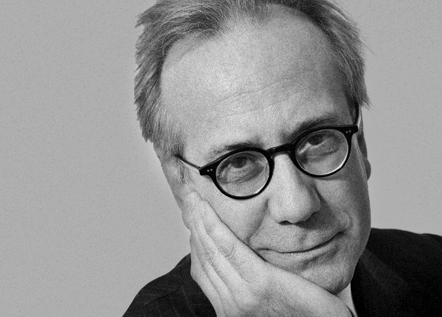
Luciano Galimberti
ADI president
Luciano Galimberti fonda nel 1985, insieme a Rolando Borsato, lo studio di progettazione BG + progettazione, con lo scopo di superare il tipico ruolo artigiano in ogni studio professionale, adottando il concetto di design thinking. Progetta soluzioni per interni, di architettura, di comunicazione e di exhibition design. Per quattro anni ha fatto parte del Comitato Direttivo ADI Lombardia, seguendo i progetti associati per il Design Mamorandum 2.0 e l’accordo ADI/Regione Lombardia per valorizzare il design. Partecipò a gruppi di lavoro per il business de “La casa del Design” e riceve importanti premi, come il Gold Prize al concorso internazionale Osake con Nautilus.
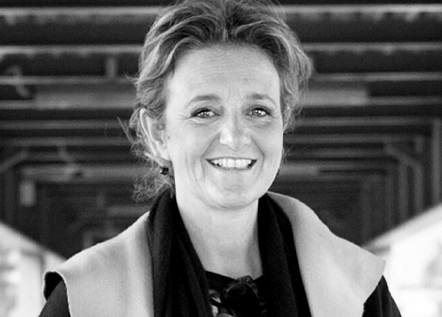
Guendalina Salimei
Architect
Guendalina Salimei, Architect and Professor of Architectural Design, director of the Master “Progettazione degli Edifici per il Culto” and professor of the PhD Theories and Design at Sapienza in Rome, is a member of the Italian-German center of excellence Villa Vigoni, the Michelucci Foundation, the Inarch and the UIA Work Program. She carry out a fruitful collaboration activity with the TUD of Darmstadt in Germany, with the NUCE of Hanoi in Vietnam, the KSUAE of Kazan in Tatarstan and the University of Sant’Anselmo in the Vatican City. She has always led her professional activity and research activity in parallel, in a constant contamination of themes and interests. In ’92 she founded T-Studio, whose activity finds a specific field of investigation in the complex relationships that are established between the design methodologies and the intervention methods of the built and natural environment. Her work, often operating in urban decay and social conditions, combines innovation and tradition, with a sensitive awareness of the local habitat. Winner of numerous awards both in Italy and abroad, among her most significant achievements: the Art Museum in Foligno, the Auditorium della Tecnica and the Mazzacurati school in Rome, the Cosenz barracks in Gaeta, the cemeteries of Frascati and Naples, the waterfronts in Taranto, Naples and Corigliano, Sparano street in Bari, reuses in Ferrara and Bologna, the fourth floor of the Corviale building and social housing in Rome, Ceccano and Latina. She designed an eco-neighborhood in Bratislava and numerous projects in Vietnam such as the eco-city in Dao Viet. There are many participations by her as a member of juries for architecture awards and committees for the qualitative evaluation of the architectural environment and as a speaker at conferences on the themes of sustainable architecture, urban reuse, sacred architecture and others. She is the author of numerous national and international publications as well as a member of the scientific committee of the journal Metamorfosi.
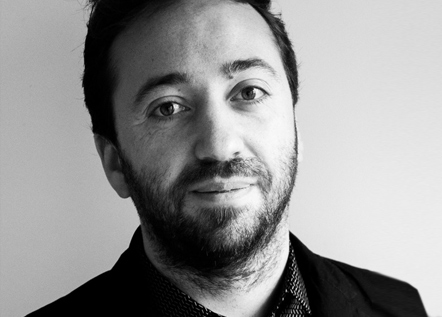
Filippo Lodi
Creative Strategist
Filippo Lodi is Associate Director at global architecture firm UNStudio and a leader of UNSx, which is UNStudio’s in-house innovation think tank and experience lab that is grounded in architectural, urban and product design. His team of architects, computational designers, product designers, creative strategists, VR/AR specialists, and sustainability consultants experiment with new methodologies, technologies, processes, and materials to design solutions for the shared human experience.
Over the last 15 years Filippo led multidisciplinary projects across scales including building adaptive and responsive environments, using data to design for happiness, and developing products and services for connectivity within cities. He advocates for user-centric & systemic approaches in architecture by applying methodologies such as design thinking and ethnographic research to connect experience design, technology solutions to the needs of the architectural and urban project. With UNSx team he pushes the boundaries of what is possible in the way we live, work and play.
Filippo is also an innovation mentor and teacher in several accelerator programs at Rockstart. A few years ago, he joined the Rockstart AI program as a mentor to help boost startup growth, by providing expert knowledge and guidance.

Marco Tortoioli Ricci
Design Director
Diplomato all’’Isia di Urbino nel 1989, allievo di Michele Provinciali e Alfred Hohenegger, dal 1990 al 1993 è Art Director presso lo studio Dolcini Associati (Pu), nel 1993 fondatore di Bcpt Associati (Pg) e nel 2003 del collettivo Co.Mo.Do per la Comunicazione sociale. Dal 1990 si occupa della progettazione di sistemi di identità visiva e design dei sistemi con speciale riferimento alla comunicazione dei territori e dei luoghi progetto e branding. Ha svolto attività di design consultant per importanti società private e pubbliche (Mondadori, Applicando, Emu, Listone Giordano Margaritelli, Apple Italia, Regione Umbria, Festival dei Teatri di Santarcangelo, Fondazione Umbria Jazz, Fontanot scale, Parqueterie Berrichonne, Poltronova, Tagina Ceramiche, Ferrero Legno, Fiera Milano, Lafarge Roofing Italia, Merker, Fondazione Olivetti, Torino World Design Capital 2008, Etimos, Sviluppumbria, Jordan Government Ministry of Tourism,, Buenos Aires Centro Cultural Chacra del los Remedios). Numerosi suoi progetti e ideazioni di marchi (Regioni Umbria e Sardegna, Comune di Gualdo) hanno ricevuto riconoscimenti italiani e internazionali (Adi Design Index, European Design Award, ecc). È stato consigliere nazionale Aiap per due mandati dal 2000 al 2006. Svolge attività didattica in corsi e master internazionali, dal 2006 è docente di Metodologia del Progetto e curatore di progetti specifici all’Isia di Urbino e dal 2014 docente di Design III presso l’Accademia di Belle Arti ‘Pietro Vannucci’ di Perugia. Dal 2019 presidente Aiap.
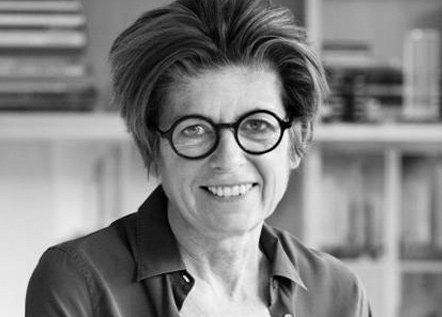
Patricia Viel
Architect and CEO ACPV
Patricia Viel, francese, nata a Milano nel 1962, si laurea in Architettura al Politecnico di Milano nel 1987. Inizia la sua collaborazione con Antonio Citterio nel 1986. Dal 1999 è socia dello Studio e responsabile dell’architettura. Partecipa come relatore a numerosi incontri di studio come esperta di una concezione di architettura ispirata ad una forte integrazione fra progetto e paesaggio urbano.
Dal 2005 al 2012 fa parte del Consiglio direttivo dell’Istituto Nazionale di Architettura, IN/ARCH. Dal 2009 al 2012 fa parte della Commissione per il Paesaggio del Comune di Milano. A settembre 2009 lo studio ha cambiato la propria denominazione sociale in Antonio Citterio Patricia Viel (ACPV) .
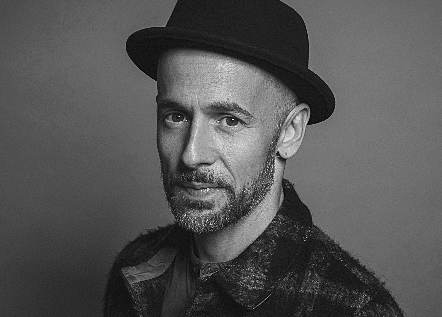
Nicolò Lanfranchi
Photographer
Nicoló Lanfranchi (Milan, Italy, 1976), photographer and journalist, has been living in Berlin for some years. His work moves between reportage, portrait, architecture and design, alternating personal projects with works for publishing, corporate and advertising (Nike).
He started in the Tam Tam agency and in Mario de Stefanis’ photolab, thanks to which he discovers the magic of black and white and documentary photography.
He has collaborated over time with numerous galleries (Cuba in between @ Open Mind, Milan 2010), NGOs, companies and international magazines including Vanity Fair, Interni, Case da Abitare, Geo, Elle, Marie Claire.
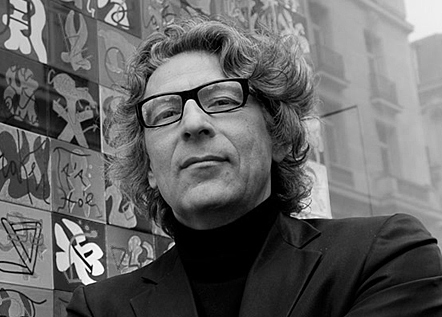
Marco Nereo Rotelli
Artist
Marco Nereo Rotelli was born in Venice in 1955, where he graduated in architecture in 1982.
For years he has been pursuing a research on light and on the poetic dimension that Harald Szeemann has defined as “an extension of the artistic context”. Over the years Rotelli has created an interrelation between art and the various disciplines of knowledge. Hence the involvement in his research of philosophers, musicians, photographers, directors, but mainly his relationship is with poetry which, over time, has become a constant reference for his work.
Among the large installations created by him are: in 1996 the work in homage to the La Fenice theater in Venice just destroyed by a fire, and presented at the Rome Quadriennale; in 2007 the permanent installation for the Living Theater in New York, commissioned by Judith Malina and dedicated to the Beat Generation; in 2008 in Jinan, China, invited to participate in the Shandog University International Biennial of Art and Design, an installation with a tragic and poetic dimension, in the year of the Sichuan earthquake, which will win him the Academy Award; in 2016 the light installations for the inauguration of the new Palestine Museum in Birzeit, and for the twentieth anniversary of Pienza, a Unesco World Heritage City.
In 2000 he founded the Art Project group, now directed by Elena Lombardi with Margherita Zambelli and Filippo Cavalli and made up of young artists and architects, with whom he carries out numerous interventions and urban installation projects. This commitment has earned him participation in eight editions of the Venice Biennale, as well as numerous solo and group exhibitions. He was invited by Northwestern University (Chicago) as an “artist-in-residence” (winter 2013). His works are present in museums and important private collections all over the world. Some of the most important art critics have written about him, as well as poets, writers, philosophers and personalities of international culture, feeding an important bibliographic collection on his work.
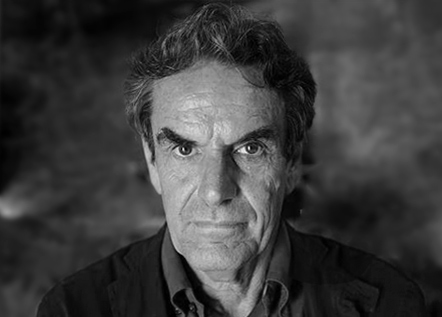
Luca Zevi
Architect & urban planner
Luca Zevi, architetto e urbanista, ha lavorato alla rivitalizzazione di vari centri storici italiani e al restauro di edifici antichi. A Roma ha realizzato il Memoriale ai caduti del bombardamento di San Lorenzo del 1943 ed è progettista del Museo Nazionale della Shoah. Per il Comune di Roma ha inoltre messo a punto una metodologia di recupero urbano mirata a una «città a misura dei bambini». Per il Ministero degli Esteri ha contribuito a progetti di sviluppo in Albania e El Salvador. Ha diretto il Manuale del Restauro Architettonico (2001) e il Nuovissimo Manuale dell’Architetto (2003). Ha insegnato nelle università di Roma e Reggio Calabria. Attualmente è impegnato nella promozione di «viali alberati del terzo millennio», attraverso l’arredo delle grandi infrastrutture della mobilità come centrali lineari di produzione di energia da fonti rinnovabili. Nel 2012 è stato nominato direttore del Padiglione Italia alla 13esima Mostra Internazionale di Architettura – La Biennale di Venezia.
